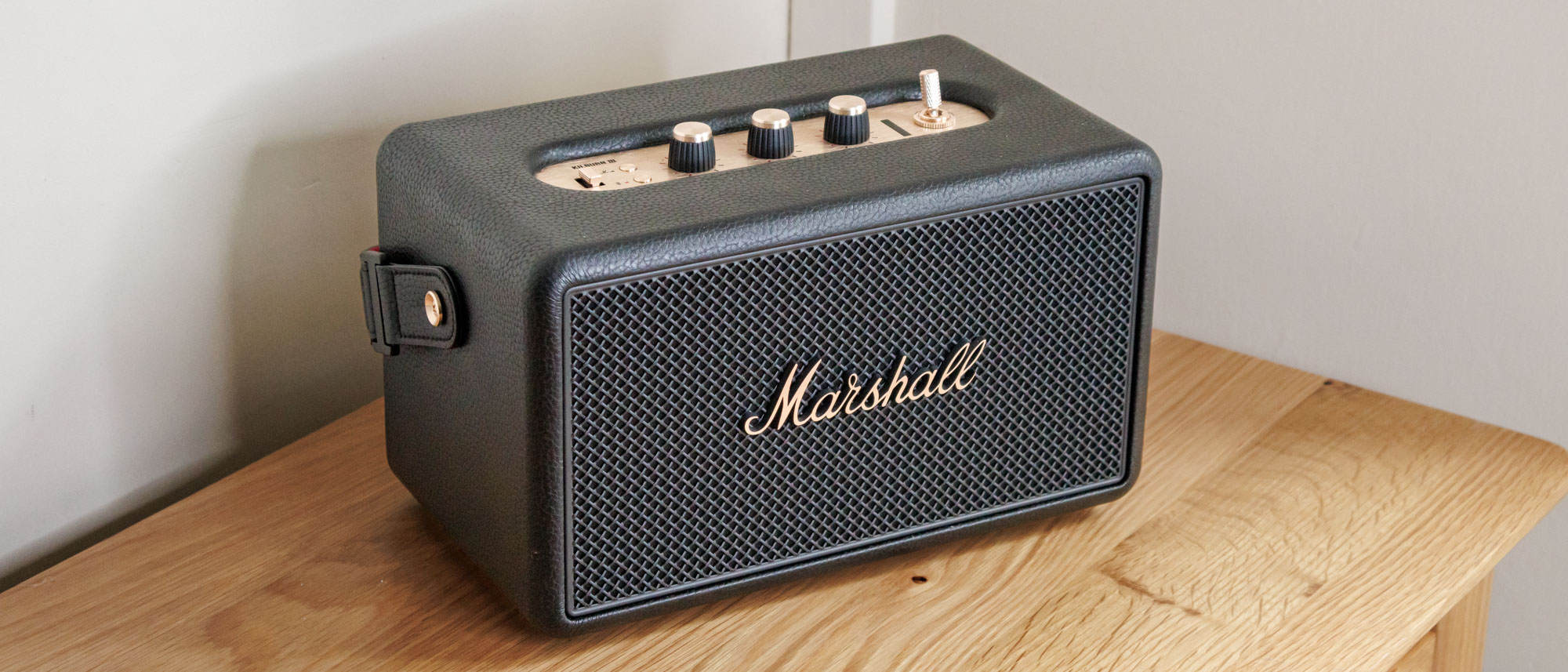Tom's Guide Verdict
Marshall’s Kilburn III brings some truly epic battery life to the table, along with some key upgrades to the sound department that make it something of a party monster. Wi-Fi at this price would have sweetened the deal, but it’s otherwise an excellent portable companion that’ll power outdoor parties for many years to come.
Pros
- +
Weighty, impactful audio
- +
useful placement tuning
- +
Handsome Marshall design
- +
Excellent physical controls
- +
Mind-blowing battery life
Cons
- -
Perhaps a little too bassy for some
Why you can trust Tom's Guide
How do you stand out in a sea of identical Bluetooth speakers? If you’re Marshall, you continue to design speakers based on the amps that you’ve been making since the 60s. The Kilburn III isn’t a departure from Marshall’s current design philosophy, and that is no bad thing at all — it looks great.
But are those looks only skin deep? Thankfully not. There are plenty of reasons to love the Kilburn III, from its excellent sound and epic battery life to its physical controls and helpful carrying handle. Despite a slightly bassy tone, the Kilburn III might just be one of the best Bluetooth speakers that I’ve ever tested — here’s why.
Marshall Kilburn III: Specs
Price: $379/£299
Colors: Black/Cream
Size: H x 5.9” D x 6.6" W x 10.7"
Weight: 6.1 pounds
Connectivity: Bluetooth 5.3
Bluetooth range: up to 33 feet (10 m)
Custom EQ: Yes
Voice assistant: No
Multi-speaker connectivity: No
Marshall Kilburn III review: Cheat sheet
- What is it? A great sounding and looking portable Bluetooth speaker
- What does it cost? $379/£299
- Who is it for? Rock n’ Roll fans looking for a powerful portable audio companion
- What do we like? It’s Marshall style, the sound quality, the battery life, and the controls on top
- What don’t we like? Some might not like the bassy sound, but you can dial it in to your preference
Marshall Kilburn III review: Price
The Marshall Kilburn III is going up against the likes of the Bose SoundLink Max ($399), the UE Epicboom ($329), and even the Sonos Move 2 ($449). That’s a strong set of competition, so it’s a very good thing that the Marshall undercuts almost all of them on price.
The Kilburn III will set you back $379, less than both the SoundLink Max and the Sonos Move 2. You might miss the Wi-Fi connection of the Move 2, but you get far superior sound to the SoundLink Max in arguably a more attractive and interesting package.
When it goes up against the slightly cheaper UE Epicboom, the only place the Kilburn III loses out is waterproofing. IP54 as opposed to the UE’s IP67. In every other metric, like sound, looks, and battery life, the Kilburn III comes out very firmly on top.
Marshall Kilburn III review: Design
- Familiar Marshall style
- Built like a leatherette-wrapped tank
- Useful carrying handle
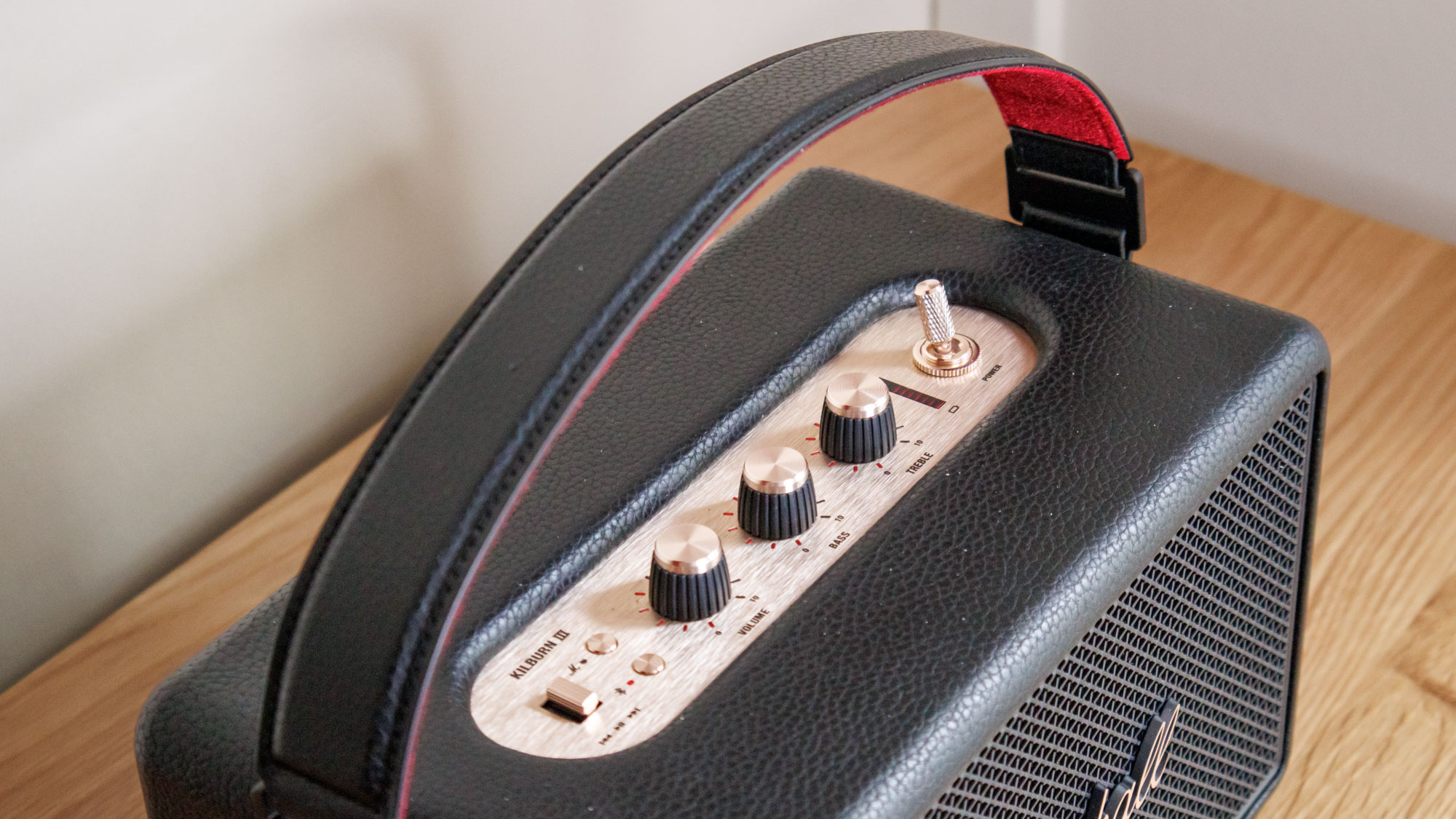
There’s an expected look to a Marshall product, and the Kilburn III doesn’t deviate from the formula. It looks like a small version of one of the firm’s guitar amps, from the metal grille and Marshall logo to its brass knobs and buttons. Evocative like little else, and absolutely ready to be cranked up to 11.
Get instant access to breaking news, the hottest reviews, great deals and helpful tips.
There are some key extras in the design that are well worth highlighting as well. The battery is removable, so that you can replace it in the future should it start to die sooner than you’d like. That’s a nice bonus, considering how many Bluetooth speakers end up in the trash the moment the battery stops holding a charge.
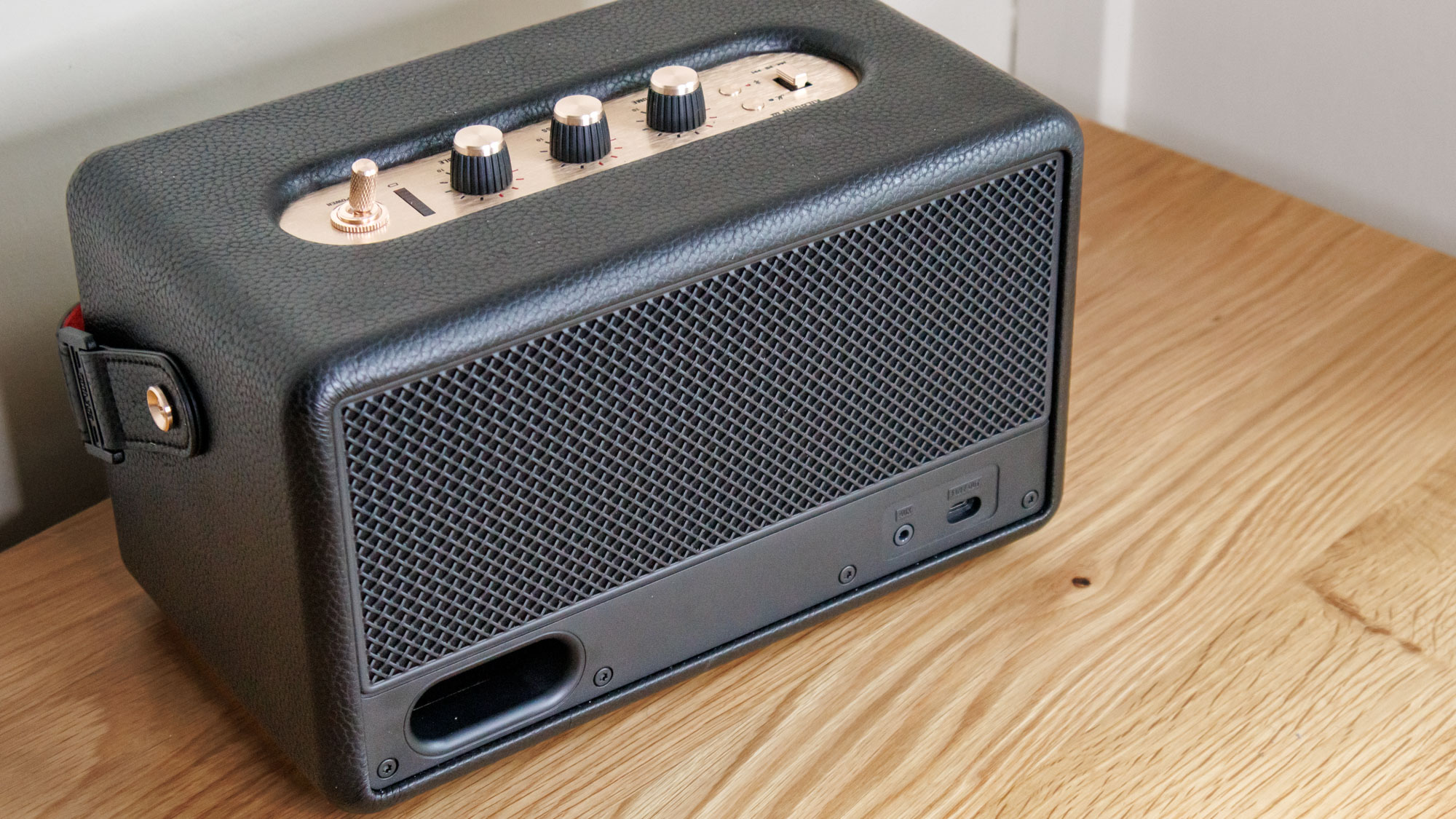
The whole thing is built exceptionally well. The fake leather coating feels great in the hand, and there’s a reassuring heft to the speaker. It’s not heavy, per se, but it’s weighty enough that you know there’s some great hardware inside. I’m yet to drop it, but I can imagine it not being too perturbed by a couple of falls from tables during particularly energetic parties.
Compare the Kilburn III to its closest rivals and you not only find a similar if not superior build, but I’d argue a more interesting industrial design. It is slightly larger than the likes of the SoundLink Max, and the retro styling look far more interesting than Bose’s relative minimalism. The Kilburn is more of a statement, that’s to be sure — but it’s one well worth making.
Marshall Kilburn III review: Connectivity and control
- Aux port
- Bluetooth 5.3
- Extensive physical controls

Some might consider Wi-Fi a glaring omission, but given that Sonos seems to be the only firm that offers a wireless internet-enabled portable speaker of similar caliber, I’m not so sure it is. It would go some way to justifying its slightly higher US price, but held to the same standard as the Bose and UE options, the blow is softened. It would be nice to have, but I don’t miss it.
Now that the lack of WiFi is out of the way, I can talk about the other connection options packed into the Kilburn III. There’s Bluetooth 5.3, and it’s easy to get connected and solid once engaged. I’ve had no signal weirdness, and it’s even exceeded the 10m range when I’ve walked around the house with my phone.
The Bluetooth connection affords Auracast, ready to listen to broadcasts. Unfortunately, there’s little support for hi-res codecs, which is a shame — but if you want to listen to higher resolution tracks the aux port is but a 3.5mm cable away.
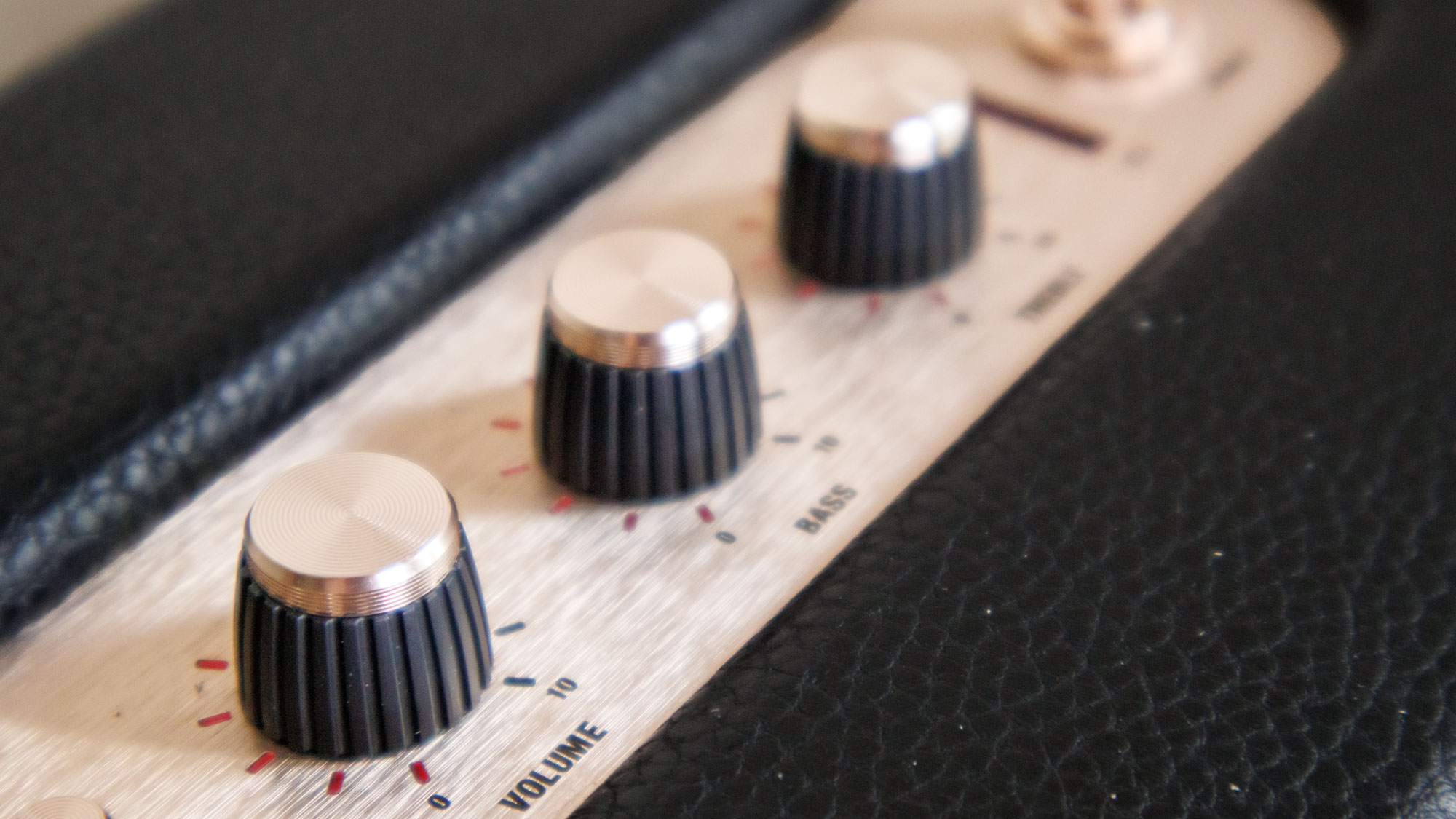
There are then a couple of ways to control the Marshall Kilburn III. There are the lovely knobs on the top of the unit, which control the volume, bass, and treble. They have little lights circling them to give you an idea of the level.
They’re joined by a kind of jog switch that clicks down to skip and play/pause your music. Then there are two small buttons. A Bluetooth button to initiate connection, and then an ‘M’ button shortcut that can be programmed in the app.
The Kilburn III uses the same Marshall Bluetooth app as the likes of the Willen II and the Emberton III. It remains a very good app. There are plenty of options on board, including EQ and other settings. There’s the speaker placement options, for example, which change the sound depending on where you’ve put it. It works well, and changes the sound accordingly.
There are also Battery preservation options to elongate the life of the battery, as well as the M-button customization settings. It can be set to change the equalizer — at the moment, that’s about it. Or nothing. It can also do nothing.
You can’t control the playback of the speaker through the app either. You’ll have to use the on-device physical controls for that, or the controls in your streaming app of choice.
Marshall Kilburn III review: Sound quality
- Big, energetic sound
- Massive bass impact
- Useful customization
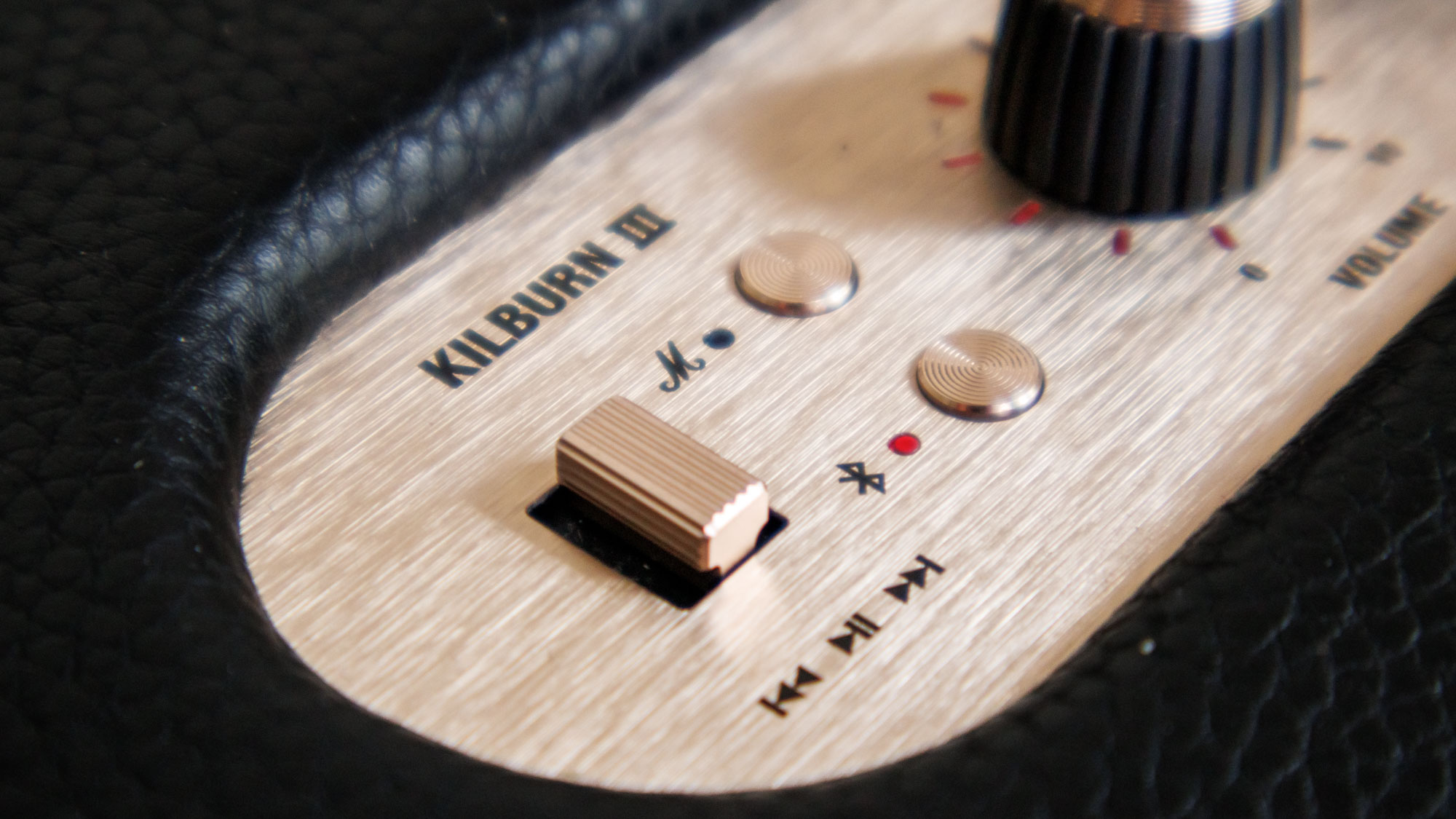
When you’ve got a speaker the size of the Kilburn III, there’s one thing you’re going to hope for in the sound department: That it sounds really, really big. And really, really big the Marshall Kilburn III indeed sounds, thanks in part to its interesting audio engineering.
Traditional Bluetooth speakers are very conventional. They have drivers facing forward, which points the sound in one direction. The Kilburn III switches things up with what Marshall calls “True Stereophonic” 360-degree audio.
That means drivers pointing every which way, blasting out sound for a stereo effect. It’s surprisingly effective — you can still place the speaker when you close your eyes, but the sound is alarmingly wide and 3-dimensional.
Add that on to the sound placement options, dynamic volume and even the EQ settings, and you’ve a speaker that sounds truly epic no matter where you place it. It fills large rooms with very little effort, and even at loud volumes, it doesn’t get peaky or distorted.
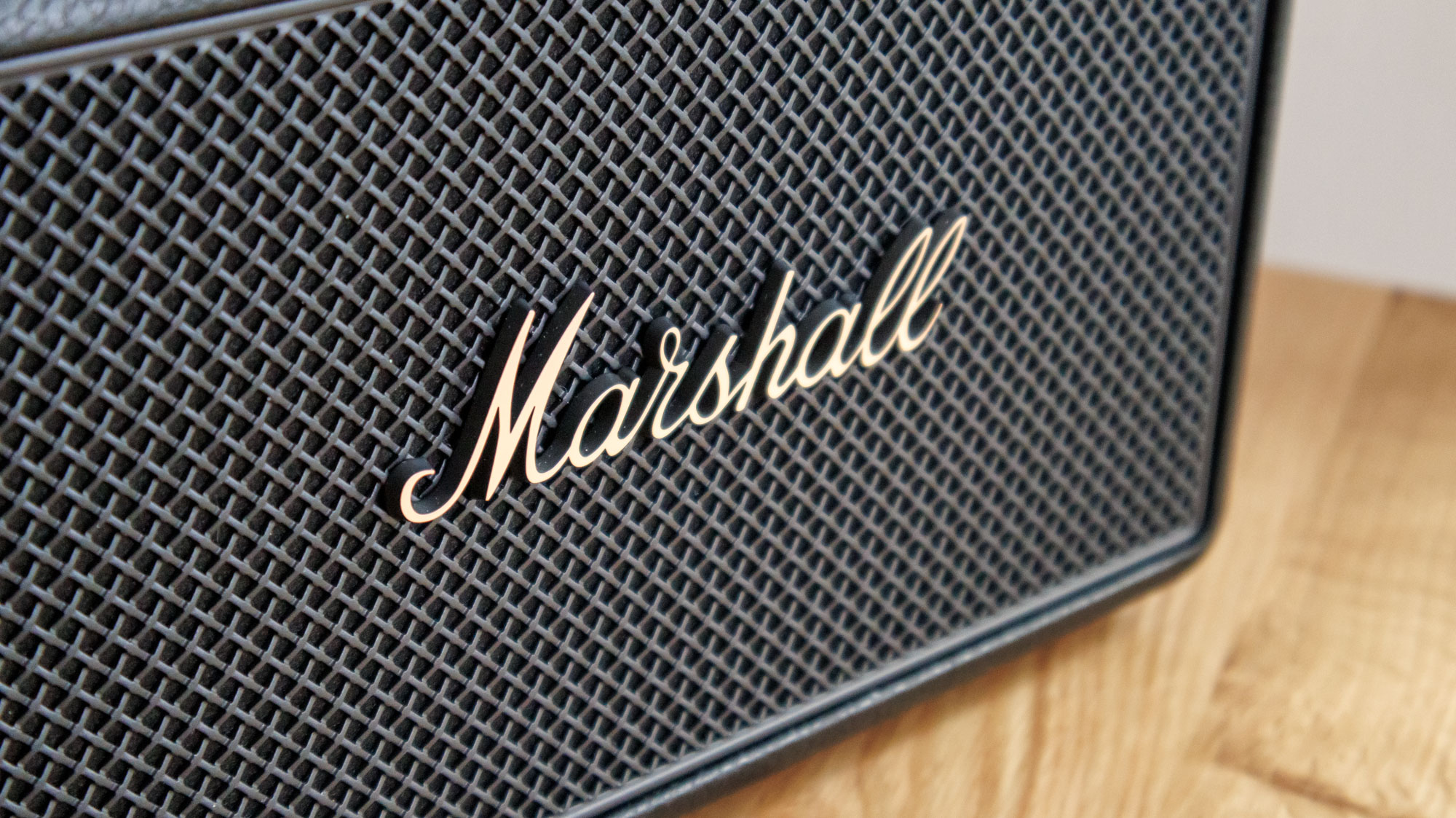
There’s a built-in subwoofer for the low stuff, and for some, it might even be a touch too much in some spaces. Thankfully, it’s super easy to turn down on top of the speaker with the bass knob, or with the EQ settings in the Marshall app.
Detail isn’t lost to the all-conquering bass either, with plenty of crash to cymbals and even delicacy during quieter moments. It’s a whole load of fun to listen to, and given how well it fills a room, I’d wager it’s the best sounding Bluetooth speaker at this price range.
It also happens to go very loud indeed. It out-matched the SoundLink Max and even the Sonos Move 2 in my testing, although those two can be doubled up for extra volume should you want it. For a solo device, the Kilburn III is unbelievably loud.
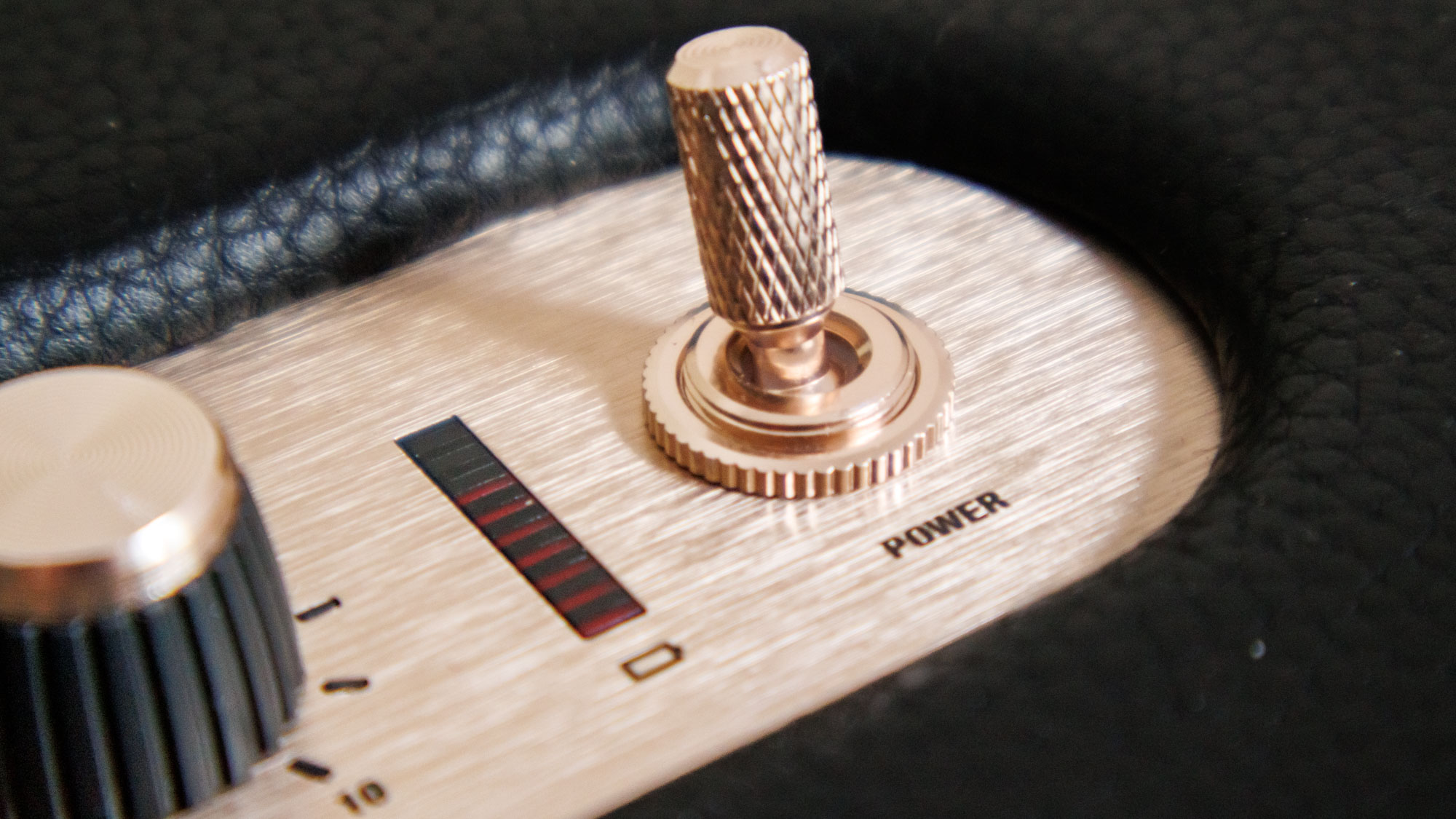
I managed to blast out Ne Obliviscaris’ Equus with little problem. Despite the speaker pumping out impressive volume, the intricacies of the prog metal track where extremely well represented. The dancing bass line was impactful and strong, while the layered guitars created and palpable wall of noise. Not impenetrable, however — the sung and growled vocals were crisp and clear, cutting through the rest of the ensemble with ease.
Tame Impala’s Elephant and its fuzzy guitars got the head bobbing and the foot tapping. The bass line is well defined and window-shaking in presence, while the drums pulsate. I don’t have any major criticisms of the sound of the Kilburn III — and any I do have can be very quickly EQ’d out with ease.
Marshall Kilburn III review: Battery life
- There’s loads of it
- And it can charge your phone
- Up to 50 hours of charge
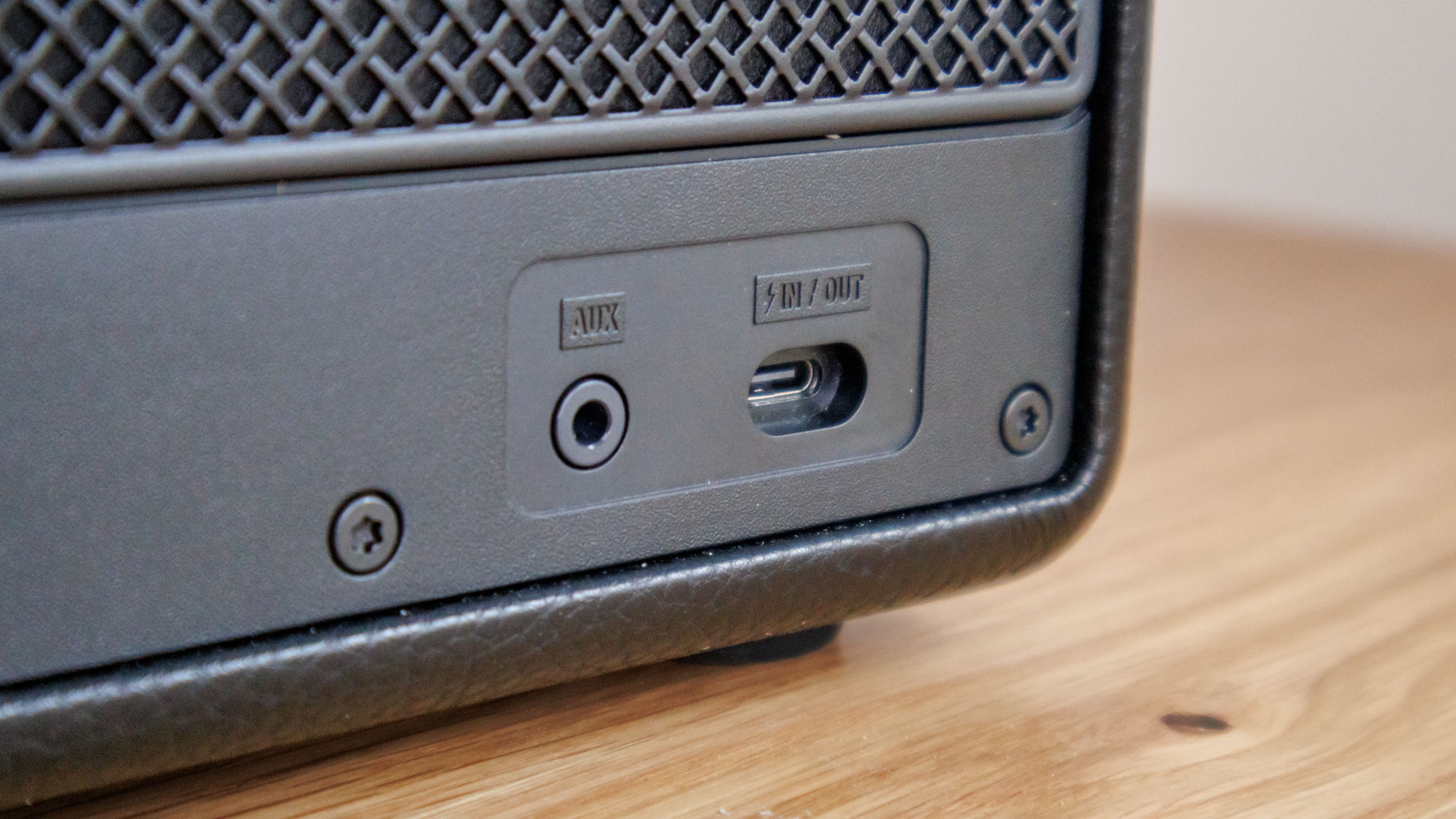
Where most Bluetooth speakers last for 20 or so hours, the Marshall Kilburn III steps it up with some truly astonishing staying power. Up to 50 hours of battery life is the best battery life of any speaker you can buy today, outdoing the likes of the Sonos Move 2, Bose SoundLink Max, and even the current record holders, JBL.
I found the battery life claims rang true during my testing. After around 8 hours of continuous use at ⅓ volume (plenty loud enough), the speaker has 85% of its battery left. Volume level and even genre will bring that figure up and down of course, although Marshall’s claims look to be accurate.
Extra bonus — plug your phone into the USB-C charging port at the back and juice your phone up in a pinch. Nice.
Marshall Kilburn III review: Verdict
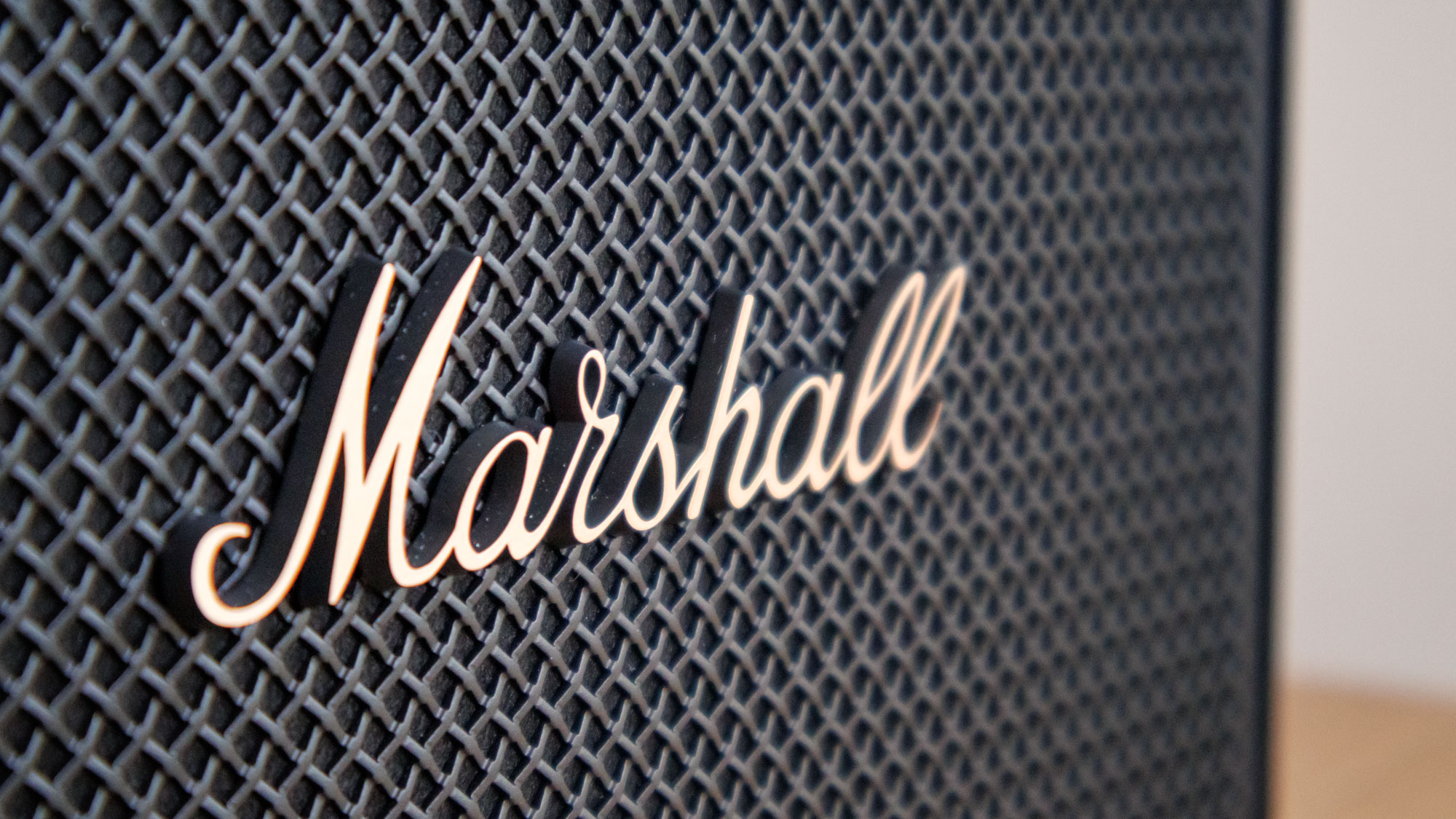
With the Kilburn III, Marshall has made one of the best Bluetooth speakers around. It sounds excellent, with an open, stereo-adjacent sound stage, and some of the most articulate bass at the price. It gets mind-blowingly loud, and even lasts for a few days while doing so.
A lack of Wi-Fi is a shame, but that’s about the only real criticism you could level at the speaker. The price is right when compared to similar rivals, and it’s looks more than give it enough cool points to stick out in a very busy, competitive space. I love this speaker, and it’s a great statement piece from Marshall to show off what their audio engineers are capable of.

Tammy and her generous collection of headphones have found a new home — Tom's Guide! After a two-and-a-half-year stint as iMore's resident audiophile, Tammy's reviews and buying guide expertise have more focus than ever on Tom's Guide, helping buyers find the audio gear that works best for them. Tammy has worked with some of the most desirable audio brands on the planet in her time writing about headphones, speakers, and more, bringing a consumer focussed approach to critique and buying advice. Away from her desk, you'll probably find her in the countryside writing (extremely bad) poetry, or putting her screenwriting Masters to good use creating screenplays that'll never see the light of day.
You must confirm your public display name before commenting
Please logout and then login again, you will then be prompted to enter your display name.
